
| Publisher: | Knopf | |
| Genre: | General, Fiction, Family Life, Literary, Religious | |
| ISBN: | 9780307959881 | |
| Pub Date: | ||
| Price: | $25.95 |
| Fiction |
by Kent Haruf
Once again, Kent Haruf (Eventide, Plainsong) takes readers to the small town of Holt, Colo., where ordinary people live with daily pain and sadness, grief and joy, underpinned by compassion and concern for each other.
The centerpiece of the novel is Dad Lewis, who's dying of lung cancer. His wife, Mary, and daughter, Lorraine, are caring for him; his son, Frank, is long estranged. Neighbor Berta May has just taken in her granddaughter Alice, whose mother died of cancer. Willa and Alene Johnson do all they can to make life more pleasant for the Lewises, as well as for Berta May and Alice. Their own stories form part of the warp and woof of the tapestry that is life in Holt. Meanwhile, a new minister preaches about the Sermon on the Mount as if it should be taken seriously: turn the other cheek, love your enemies. The congregation bolts, calling him a terrorist for not hating the people with whom we are at war.
In trademark Haruf style, there is no high drama--just the playing out of life stories as they happen. The cadence and the tales are irresistible. The benediction here is that the reader is allowed to follow along. --Valerie Ryan, Cannon Beach Book Company, Ore.
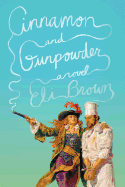
| Publisher: | Farrar, Straus & Giroux | |
| Genre: | General, Fiction, Sea Stories, Action & Adventure, Historical, Literary | |
| ISBN: | 9780374123666 | |
| Pub Date: | ||
| Price: | $26 |
| Fiction |
by Eli Brown
Any author who combines wildly disparate topics in one plot takes a risk. The resultant effect is either that of flint and tinder or that of oil and water. Eli Brown combines a swashbuckling piratical adventure with gourmet cooking, and his risk pays off--the two go together in a scrumptiously entertaining romp on the high seas, set in the year 1819.
Renowned chef Owen Wedgwood is taken captive by the crew of the Flying Rose, captained by ruthless pirate queen Mad Hannah Mabbot. She will allow Wedgwood to remain alive on one condition: he must whip up a delicious meal for her every Sunday. Like Scheherazade's stories, each meal will buy Wedgwood more time on this earth. While he struggle to create delicious dishes out of almost nothing, Wedgwood slowly learns that Captain Mabbot's murderous actions aren't without purpose. Eventually, he must choose whose side he's on: that of a society contributing to the suffering of millions of people, or that of the lawless pirate with whom he's falling in love.
For pure escapist pleasure, Cinnamon and Gunpowder has no match. The prose particularly shines during Wedgwood's descriptions of his successful meals. Readers hungrier for action than romance will find plenty to satisfy their appetites as well, with bloody battles, narrow escapes and gunplay. --Jaclyn Fulwood, youth services manager, Latah County Library District; blogger at Infinite Reads
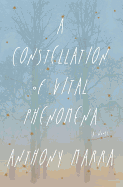
| Publisher: | Hogarth | |
| Genre: | General, Fiction, War & Military, Historical | |
| ISBN: | 9780770436407 | |
| Pub Date: | ||
| Price: | $26 |
| Fiction |
by Anthony Marra
Anthony Marra's dazzlingly good first novel is set in Chechnya under the vicious rule of the Russians. It begins when eight-year-old Havaa wakes the morning after "the Feds" burned her house and took her father. A neighbor, Akhmed, finds the girl hiding in the forest with the packed suitcase her father had told her always to keep ready. They step out into the cold and snow, walking to the hospital in Volchansk; the city looked like it was "made of shoeboxes and stamped into the ground by a petulant child." Here he meets Sonja Andreyevna Rabina, a surgeon, the last of a staff of 500, living on pills, as devastated as her hospital. Akhmed, a barely capable doctor in his village, can help her.
The novel takes place over five days, but the telling weaves in and out of the past eight years. Marra slowly unfolds his story with a balanced sureness and subtlety rare in a first novel, with a rhythm that is graceful and welcoming. Although it's sometimes horrific, it's also beautiful, heartbreaking and filled to the brim with the vital "human matter" of life. --Tom Lavoie, former publisher
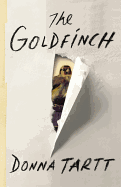
| Publisher: | Little, Brown | |
| Genre: | Fiction, Literary | |
| ISBN: | 9780316055437 | |
| Pub Date: | ||
| Price: | $30 |
| Fiction |
by Donna Tartt
A terrorist bombing in the Metropolitan Museum of Art turns 14-year-old Theo Decker's life upside-down: his young mother is killed, and the traumatized Theo unthinkingly snatches her favorite painting, The Goldfinch, from the wreckage. The theft, coupled with the derailment of his life, plunges Theo into a morass of drug addiction, alcoholism and art fraud. By the time Theo is in his 20s and engaged to a beautiful Manhattan socialite, his past has begun to catch up to him--poised to come to a final explosive denouement in Amsterdam.
Colorful characters abound: Theo's father, a degenerate gambler and failed actor; antique dealer Hobie, who takes Theo under his wing; high school friend Boris, whose access to drugs and predilection for violence contribute to the downward spiral of Theo's adult life. And there is the Barbour family, a wealthy Park Avenue clan whose elegance serves to remind Theo of all that he doesn't have.
At the center of Theo's life is his love for Pippa, a girl he glimpses in the Met just before the explosion. This obsession is ultimately the heart of the novel, because it is Theo's secret--the stolen painting, and his accumulating misdeeds--that must keep him forever alienated from the girl he loves. --Ilana Teitelbaum, book reviewer at the Huffington Post
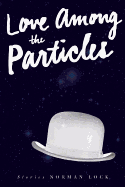
| Publisher: | Bellevue Literary Press | |
| Genre: | Science Fiction, Fiction, Steampunk, Short Stories (single author), Collections & Anthologies, Literary | |
| ISBN: | 9781934137642 | |
| Pub Date: | ||
| Price: | $14.95 |
| Fiction |
by Norman Lock
Norman Lock is one of the best writers you've never heard of, but that could change with this collection of stories combining absurdist elements and avant-garde fiction with conventional storytelling to satirize our romance with devices and our penchant for confusing technology with living.
The worlds in these stories are nearly recognizable, familiar but disguised by Lock's fabulist instincts. The first story, "A Monster in Winter," adopts flawless Edwardian language to tell the story of an ambitious journalist's efforts to exploit Mr. Hyde, with horrifying consequences. In the title story, with a nod to Kafka's Metamorphosis, a man dematerializes, becoming nothing more than particles in a digital space alongside data bits, longing for true love as he observes the world happen around him.
Lock's writing is beautiful with clean, clear, perfect sentences. He might delight in pyrotechnics but they are never self-indulgent; his language and imagination are always in service of the story. Each story feels total, complete, seducing the reader with language and narrative into a fully realized alternative world to say something new about our own.
Love Among the Particles is topical, astonishing and provocative--and should help Lock reach his widest audience yet. --Jeanette Zwart, freelance writer and reviewer

| Publisher: | Houghton Mifflin Harcourt | |
| Genre: | Fiction, Literary | |
| ISBN: | 9780547934877 | |
| Pub Date: | ||
| Price: | $26 |
| Fiction |
by Derek Miller
Complex, layered and utterly original, Derek B. Mille's debut has managed to retain all the elements of a first-rate Scandinavian thriller while turning the genre--and our expectations of it--on its ear.
The plot is deceptively simple. Octogenarian Sheldon Horowitz, a recently widowed watchmaker and Korean War veteran from New York City, has moved to Oslo with his granddaughter, Rhea, and her new husband, Lars. Rhea worries that her grandfather--irascible, melancholy and possessed of a razor-sharp ironic wit--may be suffering from dementia. When she miscarries at the beginning of the novel, she fears the news will send him over the edge. At this point, the novel takes one of its many turns: Sheldon witnesses the brutal murder of a Balkan woman whose six-year-old son hides from the attacker. Haunted by war and loss and increasingly merging fantasy and memory with reality, Sheldon decides the safest thing to do is to go on the run with the boy, who speaks no English and remains mute for the entire novel.
The story is moving yet never sentimental, intricate yet effortless. Thought-provoking, evocative, and wry in the best way, Norwegian by Night is a remarkable novel. --Debra Ginsberg, author
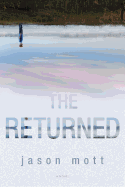
| Publisher: | Mira/Harlequin | |
| Genre: | Fiction, Literary | |
| ISBN: | 9780778315339 | |
| Pub Date: | ||
| Price: | $24.95 |
| Fiction |
by Jason Mott
With the premise of the dead walking the earth, Jason Mott's debut might seem another addition to the glut of zombie stories currently lurching around; however, nothing could be further from the truth. Mott has created a much subtler, more thought-provoking experience, without a single lumbering corpse in sight.
Harold and Lucille Hargraves have had decades to learn how to live with the loss of their only son, Jacob, who drowned in a river on his eighth birthday in 1966. But now he shows up on their doorstep, very much alive and no older than the day they found his body. All over the world, the dead are coming to life, not as reanimated corpses crawling from the grave, but just as they were right before they died, and generally turning up quite far from home. No one knows how or why the Returned appear, and more to the point, no one knows how to react.
Stimulating, occasionally dreamlike and centered on the most charmingly irascible couple in recent memory, Mott's story of literal life after death will catch readers by their hearts and capture their imaginations. We recommend not waiting around for the TV series in production. Grab this book as soon as you possibly can. --Jaclyn Fulwood, youth services manager, Latah County Library District; blogger at Infinite Reads
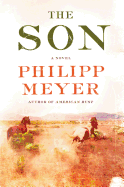
| Publisher: | Ecco | |
| Genre: | General, Fiction, Historical, Literary, Westerns | |
| ISBN: | 9780062120397 | |
| Pub Date: | ||
| Price: | $27.99 |
| Fiction |
by Philipp Meyer
In mid-19th century Texas, when Eli McCullough is 12, Comanches take him captive after killing his family. A generation later, Eli's son Peter rebels against his father after the latter orders the mass slaying of a family of Mexicans on the land adjacent to theirs. Now, Eli's granddaughter Jeannie McCullough, 86 and a formidable businesswoman, lies prone on the floor of her parlor, wondering what has happened to her while slowly losing consciousness. These three narrative threads, taking place over a span of nearly two centuries, set the scene for a novel that is an epic in the truest sense of the word: massive in scope, replete with transformations in fortune and fate, and drenched in war.
Lush with historical detail, The Son is a vivid evocation of time, place and the violence that lies at the heart of both the destruction and emergence of societies throughout history. As the balance of power shifts--with considerable carnage--among the Comanches, the Spanish and the Anglos, so does the economic and environmental reality of the state, as cattle eventually give way to oil in the 20th century. Horrific events serve as a constant reminder that Texas, and the United States as a whole, was forged in blood--that of the indigenous people and of the Europeans who settled there. --Ilana Teitelbaum, book reviewer at the Huffington Post

| Publisher: | Random House | |
| Genre: | Fiction, Short Stories (single author), Literary | |
| ISBN: | 9780812993806 | |
| Pub Date: | ||
| Price: | $26 |
| Fiction |
by George Saunders
There are times when our world seems so strange no fiction writer can capture its essential weirdness. Then George Saunders publishes a collection of stories like Tenth of December and we realize we'll always need writers like him to look obliquely at what we think of as real life and help us grasp it in all its absurd beauty.
Saunders's satiric gifts are on full display in "Escape from Spiderhead," where prisoners participate in a diabolical drug experiment that's all about the intersection of lust and violence. The "The Semplica Girl Diaries" is a send-up of our debt-ridden materialism. The narrator, wanting to impress his children, orders four "Semplica Girls," young immigrants from countries like Somalia who are hung by a surgically implanted microline as backyard ornaments. His youngest daughter's impulsive reaction ends the story on a note of grace. The lives of an endangered boy and a middle-aged cancer victim who's gone into the frozen woods to commit suicide intersect dramatically in "Tenth of December," giving the older man reason to rethink his choice.
In an interview with the New Yorker, Saunders observed that "the artist's job is to be a conduit for mystery." He's done that admirably here without sacrificing the real human feeling that infuses these distinctive stories. --Harvey Freedenberg, attorney and freelance reviewer
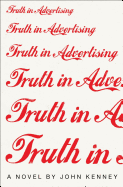
| Publisher: | Touchstone | |
| Genre: | Fiction, Satire, Family Life | |
| ISBN: | 9781451675542; $15 paperback, 9781451675559 | |
| Pub Date: | ||
| Price: | $24.99 |
| Fiction |
by John Kenney
A debut novel with a sharp bite and a sweet soul, John Kenney's Truth in Advertising has a lot to say about pop and corporate culture, work environments, friendship and family. Kenney has an eye (and an ear) for both the sublime and the ridiculous, effortlessly combining satire and domestic drama, but he never sacrifices humor in the service of emotion.
Finbar Dolan is an almost-40 adman who's been put in charge of Snugglies, his company's big diaper account. With a wit sharp enough to split a falling hair, Fin has no illusions about the sometimes ludicrous nature of his work, where a narrative may not have any relationship to the truth. Fin has concocted his own narrative--a defining story that fits who he thinks he should be--unfortunately, this story is as thin and weightless as his ad campaign. He is desperately lonely, secretly in love with his coworker Phoebe and haunted by memories of his tragic childhood.
An honest and insightful novel about a business and a life that have both been anything but, Truth in Advertising is a wonderfully entertaining and elegantly written first novel from an author who will surely find a large and appreciative audience. --Debra Ginsberg, author
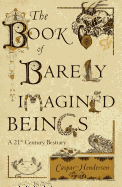
| Publisher: | University of Chicago Press | |
| Genre: | Animals, Art, General, Plants & Animals, Life Sciences, Subjects & Themes, Science, Zoology - General, Nature | |
| ISBN: | 9780226044705 | |
| Pub Date: | ||
| Price: | $29 |
| Nonfiction |
by Caspar Henderson
In The Book of Barely Imagined Beings, Caspar Henderson explores a world of real animals stranger than any imaginary beast--animals barely imagined because our knowledge of them is "too cramped and fragmentary to accommodate them." Like medieval bestiaries, Henderson's work attempts to understand and celebrate the beauty and diversity not only of beings but also of being itself.
The "21st-century bestiary" is divided into 27 essays, ranging in subject from the axolotl to the zebra fish. The seemingly narrow focus of each essay is misleading. Whether discussing the importance of the human foot or the abundance of real-life unicorns, Henderson considers his subjects in wide-ranging terms. He weaves together zoology, evolution, mythology, cosmology, philosophy, history and ecology with a light touch, quoting poets as often as paleontologists. This is a book of big ideas and carefully chosen details, and the physical book is as beautiful as the language in which it is written; like its medieval counterparts, its wide margins are home to illuminating marginalia.
Humankind--our relationship to other animals and our affect on the global ecosystem--is a theme that runs throughout the book as Henderson challenges us to consider what we value, what we fail to value and how we might change. --Pamela Toler, blogging at History in the Margins
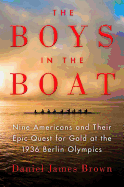
| Publisher: | Viking | |
| Genre: | United States, General, Sports & Recreation, History, Boating, State & Local - Pacific Northwest, 20th Century, Olympics | |
| ISBN: | 9780670025817 | |
| Pub Date: | ||
| Price: | $28.95 |
| Nonfiction |
by Daniel James Brown
The triumphant moment at the 1936 Berlin Olympics when the eight rowers and one coxswain in the Husky Clipper won gold for the U.S. in the eight-oared crew race has gone down in Olympic record books. To some--including Adolf Hitler, who watched that race--the University of Washington crew had scored an upset. To Al Ulbrickson, the Washington rowing coach nicknamed "The Dour Dane," the victory was not entirely a surprise. In April 1933, with a new crop of crew candidates (who had never rowed a boat), Ulbrickson found the qualities needed: raw power, stamina, willpower, the intelligence to master rowing technique and the ability to drop all traces of ego once seated in the boat.
With nail-biting suspense, Brown establishes the rare, thrilling you are there quality that epitomizes the best in sportswriting, and captures the personalities, psychologies and stories of all the players, from the behind-the-scenes boat builder and rowing guru George Pocock to the brilliant and self-assured coxswain Bobby Moch and the heart of the story, rower Joe Rantz. According to Al Ulbrickson, this UW Husky crew was "the finest I ever saw seated in a shell. And I've seen some corking boatloads." --John McFarland, author

| Publisher: | Beacon Press | |
| Genre: | General, Biography & Autobiography, Social Science, Environmental Conservation & Protection, Gender Studies, Personal Memoirs, Nature | |
| ISBN: | 9780807001004 | |
| Pub Date: | ||
| Price: | $24.95 |
| Nonfiction |
by Christine Byl
Christine Byl adeptly intermingles stories of life as a trail dog--"a laborer who works in the woods maintaining, repairing, building, and designing trails"--with reflections on her natural surroundings. The stories are grounded by the tools she learns to use to clear deadfalls, haul away brush, clean ditches and build rock staircases and log walkways. Her 10- to 14-hour days slogging through thick brush or fording thigh deep through icy rivers to reach a designated work site are usually cold, dirty and wet.
Covering 16 years and hundreds of miles of trails in the Glacier and Denali national parks--plus one steadfast relationship--Byl reflects on her tools, her fellow trail dogs, the wildness that surrounded her and the meaning of labor that either makes or breaks a person. She discovers herself amid the sweat, bugs, dirt and dirty jokes, and rejoices in the way her body feels and responds to the demands placed on it. Byl's expressive and descriptive prose opens the doorway to a hard but fulfilling way of life that few people notice or get to experience firsthand. "[The] outdoors is not playground but homeschool, where I am taught to settle in, over and over until being outside isn't about endurance or leisure, but life." --Lee E. Cart, freelance writer and book reviewer
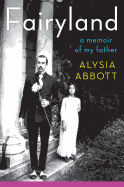
| Publisher: | W.W. Norton | |
| Genre: | Gay & Lesbian, Biography & Autobiography, Personal Memoirs | |
| ISBN: | 9780393082524 | |
| Pub Date: | ||
| Price: | $25.95 |
| Nonfiction |
by Alysia Abbott
When Alysia Abbott was two years old, her mother was killed in a car accident. Her father, Steve, moved her across the country to raise her alone as a gay man and single father in 1970s San Francisco--a pioneer in several senses. Alysia's childhood and teen years took place against the backdrop of a magical, experimental Haight-Ashbury district filled with creative, adventurous people like her father (a poet and political activist), recreational drugs and minimal supervision.
Their father-daughter relationship was loving but rocky. When Steve develops AIDS and his health begins to plummet, he calls 20-year-old Alysia home from her studies in Paris and New York City to nurse him, a full-circle caretaking demand that she resents at the time.
Fairyland is foremost a daughter's memoir of a much-loved parent, in a colorfully rendered iconic epoch in San Francisco. Alongside beautiful characterizations (often morphing into eulogies), Alysia paints a stark image of the AIDS epidemic and the Reagan administration's non-response to it. As a personal story and as a portrayal of an era, Fairyland is powerful, loving, authentic, and contains Steve's artistic legacy in its lyricism. It acknowledges Steve's impact on Alysia--and both their shortcomings--with gratitude and grace. --Julia Jenkins, librarian and blogger at pagesofjulia
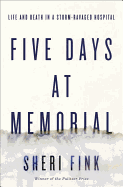
| Publisher: | Crown | |
| Genre: | Disasters & Disaster Relief, Assessment & Diagnosis, Death & Dying, Nursing, Social Science, Medical, Disease & Health Issues | |
| ISBN: | 9780307718969 | |
| Pub Date: | ||
| Price: | $27 |
| Nonfiction |
by Sheri Fink
It has been eight years since Hurricane Katrina devastated New Orleans; since then, countless stories of individual tragedies, epic governmental failures and rippling aftereffects have been explored across all media. In Five Days at Memorial, Pulitzer Prize-winning author and physician Sheri Fink presents a meticulously researched examination of one of the most shocking stories to come out of Hurricane Katrina: the deaths of 45 patients at Memorial Medical Center in the days following the storm. An investigation into those deaths began almost immediately; one year after the storm, a physician, Anna Pou, and two nurses were arrested and accused of euthanizing several of those patients.
Throughout this horrifying, engrossing book, Fink's reporting is detailed, nuanced and far-reaching, yet never biased--a stunning accomplishment in a story with this kind of moral complexity. And while the material devoted to the sweltering, desperate days and nights inside Memorial are stunning, the latter part of the book, discussing the legal wrangling that followed, is equally compelling. She gives voice to all sides--the doctors, nurses, families and patients themselves--leaving the conclusions and judgments, none of which can or ever will be easily reached, to the reader. This is a book not to be missed. It is, quite simply, required reading. --Debra Ginsberg, author
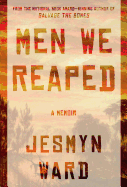
| Publisher: | Bloomsbury | |
| Genre: | Cultural Heritage, Biography & Autobiography, Literary, Personal Memoirs | |
| ISBN: | 9781608195213 | |
| Pub Date: | ||
| Price: | $26 |
| Nonfiction |
by Jesmyn Ward
After her 2011 National Book Award-winning novel Salvage the Bones, Jesmyn Ward turns to memoir to understand the seemingly unrelated recent deaths of five young men from her close-knit Mississippi community. The result is a vivid and searing look at the legacy of racism in America by a writer with exceptional narrative gifts.
Starting with her own return to DeLisle in the summer of 2004, Ward tells each man's story in chapters woven into her larger family narrative. We share her grief at the loss of these young men on the margins whose lives society does not value, and understand why she loved each of them--Rog, Demond, CJ, Ronald and, finally, her brother, Joshua, killed by a drunk driver.
Men We Reaped is a stunning look at racism, the people it marginalizes and how we are all implicated. Ward ultimately sees these deaths as the consequence of racism so ingrained it is almost unremarkable. When poverty affects African-Americans in disproportionate measure and options become nonexistent, depression, recklessness and the abuse of drugs and alcohol can seem reasonable responses; when there is no margin for error, any risk is magnified. It is a testament to Ward's gifts as a writer that she makes this journey our own. --Jeanette Zwart, freelance writer and reviewer
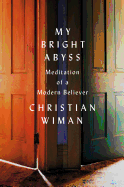
| Publisher: | Farrar, Straus & Giroux | |
| Genre: | Christian Life, Biography & Autobiography, Religion, Spiritual Growth, Religious, Personal Memoirs | |
| ISBN: | 9780374216788 | |
| Pub Date: | ||
| Price: | $24 |
| Nonfiction |
by Christian Wiman
Award-winning poet Christian Wiman displays considerable craft in each well-honed sentence of My Bright Abyss, a poetic, sometimes visionary collection of linked essays examining his religious faith in the wake of a cancer diagnosis. While the collection's subtitle invokes "belief," this is not an easy, non-questioning faith or the stridency of a televangelist. These essays are surgical gems of gimlet-eyed clarity that never find easy palliatives but do find celestial affirmation at great cost and great pain.
When God does speak to Wiman, it appears in small, barely noticeable ways, as in the compassionate gestures of others and in his own considerable discipline with the written word. Wiman is brilliant at angling his way into the small places and murky crevices where poetry artfully composed becomes a form of prayer. He captures the heartbreaking everyday epiphanies that reflect the places where grace is most evident and luminously alive. And Wiman is wonderfully inclusive to fellow travelers who have felt no pull or need for God--in fact, he admits, these types are his own natural constituency, the ones he feels most comfortable with.
My Bright Abyss is a wonderful book, full of heart, grace, generosity of spirit and no small beauty. --Donald Powell, freelance writer
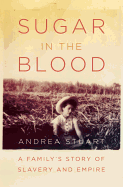
| Publisher: | Knopf | |
| Genre: | General, Biography & Autobiography, Cultural Heritage, Economic History, Slavery, History, Social Science, Agribusiness, Industries, Business & Economics, Personal Memoirs, Caribbean & West Indies | |
| ISBN: | 9780307272836; Vintage, $16.95 paper 9780307474544 | |
| Pub Date: | ||
| Price: | $27.95 |
| Nonfiction |
by Andrea Stuart
In this absorbing, evocative history of slavery in Barbados, Andrea Stuart passionately and cogently argues that sugar--"more than any other commodity in human history"--has "shaped our tastes, transformed our landscape and influenced our politics." For Stuart, the story of sugar is complex, painful and profoundly personal: like many others with Caribbean roots, she is descended from a wealthy sugar plantation owner and a female slave.
She uses her ancestors--beginning with Englishman George Ashby in the 1630s--to tell the story of Barbados's unfolding from untamed wilderness to cultivated colony to floundering society devastated by violent rebellion and the fatal pitfalls of empire. Her history of the island's slaves is, necessarily, upsetting but vital, from the atrocities of the Middle Passage to appalling labor conditions and the ubiquitous rape and exploitation of female slaves.
Stuart has a historian's respect for truth, an economist's skill for incisive analyses and a novelist's flair for color and detail. Having published two biographies prior to this book, she has expertly applied her skill and sensitivity to this "biography" of Barbados. Her deeply personal connection to the subject--the "sugar in her blood"--makes this history all the more urgent and engrossing. --Hannah Calkins
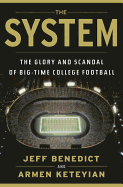
| Publisher: | Doubleday | |
| Genre: | Football, General, Sports & Recreation, Business Aspects | |
| ISBN: | 9780385536615 | |
| Pub Date: | ||
| Price: | $27.95 |
| Nonfiction |
by Jeff Benedict, Armen Keteyian
Investigative journalists Jeff Benedict and Armen Keteyian have written an explosive book about the country's most popular sport. In 2012, Johnny Manziel was on his way to a Heisman (his star now tarnished by an autographs for money mini-scandal, the NCAA tarnished by benching him for a mere half game); the child abuse sex scandal at Penn State blew up; Ohio State was "bruising" its way to an undefeated season while barred from a bowl game; dozens of schools were on probation for academic cheating and money shenanigans. Major conference realignments meant a bigger share of TV revenue but eroded the trust and friendship college presidents and athletic directors had fostered for decades. And "student-athletes" are still essentially slaves, working an 11-month job with the benefits of season-ending injuries and long-term brain damage.
Benedict and Keteyian write with depth, insight and graceful prose ("long, languid Louisiana athleticism"). They leaven the scandalous (and merely eyebrow-raising) with the glory--the coaches who care about their guys, who want them to graduate and thrive; the players for whom football may be the only salvation; the college presidents who make difficult decisions, knowing that the sport's revenue benefits more than football.
This engrossing book is a fittingly hard-hitting account of money, cheating, pain and often inspiration. --Marilyn Dahl, editor, Shelf Awareness for Readers
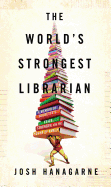
| Publisher: | Gotham Books | |
| Genre: | General, Language Arts & Disciplines, Library & Information Science, Biography & Autobiography, Personal Memoirs | |
| ISBN: | 9781592407873 | |
| Pub Date: | ||
| Price: | $26 |
| Nonfiction |
by Josh Hanagarne
Josh Hanagarne, a 6'7" gentle giant who tears phone books for fun, tends to catch the eye (or ear) at his job at the Salt Lake City Public Library, even when his Tourette Syndrome is not acting up. His memoir explores these contradictions and oddities, in his remarkable journey from idyllic childhood to painfully jerky young adulthood to a contented family and work life.
The adult who relates his story is happy and stable, working full-time at the library, but his journey through years of battling Tourette's and depression has been arduous. As he relates his stranger-than-fiction story, he intersperses anecdotes from a workplace rife with strange and occasionally smelly patrons and events. He muses eloquently about the role of libraries in society, and their future possibilities. While always circling back to libraries and to books--as he struggles with his Mormon faith and faces myriad life challenges--central to Josh's story is his love of family. From his loving parents and exceptionally close siblings through the clear delight Josh finds in marriage and fatherhood, he stresses the inestimable gift of a loving family.
Josh's memoir is thoughtful, heartfelt, often hilarious and unsparingly honest. The younger Josh was unsure and unstable, the older Josh is more comfortable in his own skin. But both have tics--and stories to tell. --Julia Jenkins, librarian and blogger at pagesofjulia
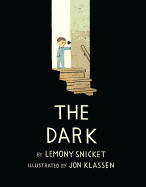
| Publisher: | Little, Brown | |
| Genre: | Bedtime & Dreams, Social Issues, Juvenile Fiction, Emotions & Feelings | |
| ISBN: | 9780316187480 | |
| Pub Date: | ||
| Price: | $16.99 |
| Children's & Young Adult |
by Lemony Snicket, illust. by Jon Klassen
Having written 13 books about a family of orphans living in fear, Lemony Snicket (A Series of Unfortunate Events) pens a triumphant picture book in which a boy conquers his fear of the dark. Jon Klassen (This Is Not My Hat) makes us believe the dark is alive, and Snicket gives voice to it.
"Laszlo was afraid of the dark," the book begins. Klassen exploits the interplay between light and dark, as the hero looks nervously at the window, where the sun sets in the rosy rectangle of a window frame. The boy and the dark are the sole characters in the book. The light plays off the staircase in rectangular blocks as the darkness increases its dominance. Snicket's sparest statements cause the scariest effects: "Sometimes the dark hid in the closet. Sometimes it sat behind the shower curtain." Laszlo stands atop the basement stairs and says, "Hi, dark...." Maybe if Laszlo visits the dark, then the dark won't visit him. But, of course, the dark does.
Snicket and Klassen build to a well-earned victory for Laszlo, synchronized exquisitely between text and artwork. By the end, Laszlo ventures as far down as the second landing on the basement stairs; he will be just fine. --Jennifer M. Brown, children's reviews editor, Shelf Awareness
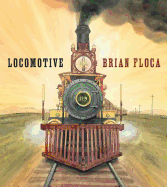
| Publisher: | Richard Jackson/S&S | |
| Genre: | Juvenile Nonfiction, Railroads & Trains, Transportation, History, Machinery & Tools, United States/19th Century, Technology | |
| ISBN: | 9781416994152 | |
| Pub Date: | ||
| Price: | $17.99 |
| Children's & Young Adult |
by Brian Floca
After his paeans to the sea (Lightship) and space travel (Moonshot), Brian Floca here pays soaring tribute to the iron horse that rides the rails at the dawning of the Transcontinental Railroad.
The author-artist connects past to present with the universal experience of a boy and girl who wait on the platform with their mother. As the train moves closer, the images and typeface grow in size and clarity ("CLANG-CLANG-CLANG"; "Whoo-oooo"). Floca toggles between the macro view (with maps and labels of cutaway train images), and close-up views (e.g., the train rolling out of the station), and demonstrates the impact of the train on the larger culture as well as individual travelers. For instance, he lays out the paradox introduced by train travel with a serene view of the Great Plains and nary a sign of civilization ("smell the switchgrass and the bluestem, hot beneath the sun"). As the family travels along the tracks, Floca offers tantalizing details: toilets drain onto the tracks; a boy sells newspapers, food and soap is a "butch." At the end of the journey, the children's father waits with open arms.
Readers will want to board this locomotive again and again. --Jennifer M. Brown, children's editor, Shelf Awareness
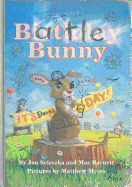
| Publisher: | Simon & Schuster | |
| Genre: | Animals, General, Imagination & Play, Holidays & Celebrations, Action & Adventure, Juvenile Fiction, Birthdays, Humorous Stories | |
| ISBN: | 9781442446731 | |
| Pub Date: | ||
| Price: | $14.99 |
| Children's & Young Adult |
by Jon Scieszka, Mac Barnett, illust. by Matthew Myers
Leave it to Jon Scieszka (Knucklehead) and Mac Barnett (Extra Yarn) to take a bland birthday story starring a benign bunny and turn it into a tale of a rabbit on a rampage, ready to wage war.
As with all great comedy, timing is everything. A sweet bunny wakes after "a night of pleasant dreams." However, a boy named Alex peers in through the window with a thought balloon that reads, "Uh oh." With a turn of the page, readers see why: the Birthday Bunny transforms into "Battle Bunny!" sporting a pirate's patch and a bandolier. The original text is crossed out in pencil so that children can see the ingenious ways in which Alex has amended the words. The contrast gives the book its humor. Matthew Myers's artwork, too, shifts from a rose-colored vision--all sunshine and lollipops--to the world of the demonized rabbit wreaking havoc.
Scieszka, Barnett and Myers invite children to take an active role in this story and to think critically about the choices author and artist make. Most of all, Battle Bunny makes for great entertainment: it's funny, the plot builds and the protagonist captivates readers' attention. It begs to be reread and shared. --Jennifer M. Brown, children's editor, Shelf Awareness
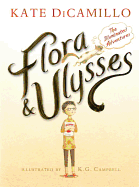
| Publisher: | Candlewick Press | |
| Genre: | Fantasy & Magic, Family, Juvenile Fiction, Action & Adventure, Superheroes, Comics & Graphic Novels, Marriage & Divorce | |
| ISBN: | 9780763660406 | |
| Pub Date: | ||
| Price: | $17.99 |
| Children's & Young Adult |
by Kate DiCamillo, illust. by K.G. Campbell
Kate DiCamillo's (The Tale of Despereaux) latest adventure begins when a Ulysses Super-Suction, Multi-Terrain 2000X vacuum cleaner accidentally sucks up an ordinary squirrel, thus transforming him into a super-strong superhero who can type poetry, if not vanquish villains. Flora, a quirky-smart 10-year-old, fears for the life of her extraordinary new friend Ulysses, with good reason. Her mother wants Flora's father to whack the critter with a shovel and bury him. Arch-nemesis, check.
The heart-tugging story of Flora's loneliness, her rocky relationship with her divorced parents, and a peculiar but possible new friend, William Spiver, interweaves seamlessly with the side-splitting shenanigans and ponderings of a sentient squirrel superhero. Not only is Ulysses always very hungry, he's enamored with the world: "He loved all of it: smoke rings and lonely squids and giant donuts and Flora Belle Buckman's round head and all the wonderful thoughts inside of it." K.G. Campbell's charming, funny, cartoon-panel, b&w pencil-sketch vignettes zero in on Ulysses in action, whether typing, flying or outmaneuvering an evil cat.
Eccentric characters, snappy prose and the fantastical plot give this delightful novel a giddy, over-the-top patina, but the core is big and hopeful, contemplative and bursting with heart. No small feat, even for a superhero like DiCamillo. --Karin Snelson, freelance writer and children's book editor
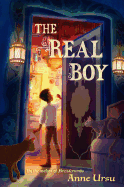
| Publisher: | Walden Pond/HarperCollins | |
| Genre: | Friendship, Fairy Tales & Folklore, Adaptations, Self-Esteem & Self-Reliance, Fantasy & Magic, Social Issues, Juvenile Fiction | |
| ISBN: | 9780062015075 | |
| Pub Date: | ||
| Price: | $16.99 |
| Children's & Young Adult |
by Anne Ursu, illust. by Erin McGuire
In the tradition of the Velveteen Rabbit and Pinocchio, Anne Ursu's (Breadcrumbs) novel explores what makes someone (or something) "real." The author mines the potential of magic and mystery in the story of 11-year-old Oscar, whom the magician Master Caleb plucked from the orphanage.
Oscar lives with Master Caleb in the Barrow, "the tangle of forest and darkness" that encircles Asteri, the "Shining City," named for its "Shining People." Oscar prefers not to talk with anyone. He feels most at home in the forest, where the magic lives in the soil of the wizard trees, and he can gather herbs to mix Master Caleb's concoctions. Ursu weaves together a haunting tale of villagers who avoid confronting themselves, and instead crave more and more magic to solve their problems. The cost is great.
Ursu describes how Oscar prizes routine and rules--and how compelled he feels to find answers to what's happening to the disintegrating world around them ("[I]t was very difficult to know how to function in the world when every truth turned out to be just an illusion"). As Oscar ventures into the unknown to set things right, he learns he has more courage than he could ever have imagined. --Jennifer M. Brown, children's editor, Shelf Awareness
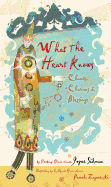
| Publisher: | Houghton Mifflin Harcourt | |
| Genre: | Juvenile Nonfiction, General, Poetry | |
| ISBN: | 9780544106161 | |
| Pub Date: | ||
| Price: | $16.99 |
| Children's & Young Adult |
by Joyce Sidman, illust. by Pamela Zagarenski
These 29 poems from the duo behind Red Sings from Treetops touch upon life's heartaches and triumphs, quandaries and epiphanies.
Divided into four sections, the collection begins with "Chants and Charms," and the poem "Chant to Repair a Friendship," with a haunting refrain: "Come, friend, forgive the past;/ I was wrong and I am grieving." The poem hinges on a phrase at its center: "Anger's brief, but love is vast." Zagarenski's reassuring illustration depicts one friend precariously balanced upon a wheel as the other reaches out a steadying hand. "Time Spells" picks up the theme again, as Sidman exposes time's schizophrenic characteristics--pining for acceleration ("God of Time,/ bring forth all galloping things") and then to brake and "stretch like a sleepy dog" when in the company of friends. As she offers advice on "How to Find a Poem" ("Wake with a dream-filled head/.../ stand waiting/ on delicate hooves"), Zagarenski softly blends real and surreal earthtoned images of an elusive deer and its observer.
The volume makes an ideal companion for the transition into adulthood, when young people may experience the paradox of a connection to their inner convictions as well as an alienation from their physical metamorphosis. --Jennifer M. Brown, children's editor, Shelf Awareness

| Publisher: | Knopf | |
| Genre: | Horror & Ghost Stories, General, Fairy Tales & Folklore, Fantasy & Magic, Juvenile Fiction | |
| ISBN: | 9780375849725 | |
| Pub Date: | ||
| Price: | $17.99 |
| Children's & Young Adult |
by Tom McNeal
This highly imaginative spin on the Brothers Grimm tales casts the ghost of Jacob Grimm in the role of narrator and godfather to a contemporary teenage boy.
Upon his death, Jacob Grimm is thrust into a kind of purgatory. But he finds a calling in protecting 15-year-old Jeremy Johnson Johnson in the small village of Never Better.
McNeal (author of To Be Sung Underwater, for adults) strikes an impressive balance between a small-town setting with modern amenities and a timeless quality in a society that predates cell phones, and where kids still pull pranks, such as the one attractive Ginger Boultinghouse convinces Jeremy to pull on the town's baker. Jeremy can hear ghosts, and McNeal exploits the comic possibilities. Jacob gives Jeremy helpful hints on his exams and advice (often ignored, when it comes to Ginger). The author flaunts his bounty of Grimm facts when Jeremy chooses fairy tales as his specialty for a TV quiz show, and again at a much darker hour, when Jeremy, Ginger and another boy from town are kidnapped.
Structured like a fairy tale, the story will keep readers on the edges of their seats with its overriding sense of danger, lurking like a deep forest surrounding the town. --Jennifer M. Brown, children's editor, Shelf Awareness
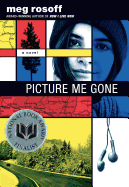
| Publisher: | Putnam | |
| Genre: | General, Mysteries, Espionage, & Detective Stories, Family, Juvenile Fiction | |
| ISBN: | 9780399257650 | |
| Pub Date: | ||
| Price: | $17.99 |
| Children's & Young Adult |
by Meg Rosoff
In the unerring voice of 12-year-old Mila, Meg Rosoff (There Is No Dog) unlocks a mystery that takes her heroine from precocious child to young woman over the span of her Easter holiday.
Mila and her father, Gil, are preparing to leave London to visit Gil's oldest and best friend, Matthew, in New York. But Gil receives a call from Matthew's wife: Matthew has disappeared. Mila is good at solving puzzles, and she has always wanted to thank Matthew for saving her father's life. Prior to their departure, Catlin, Mila's estranged best friend, attempts a rapprochement. Mila thinks, "I didn't exactly miss her because she seemed like someone I no longer knew." Flashbacks of what passed between them become a lens for Mila as she tries to make sense of her father's friendship with Matthew.
With her discoveries about Matthew's messy life, Mila learns that her father has also kept secrets from her. "If a person can lie to you about one thing," Mila thinks, "he can lie about something else." Mila's sense of humor, intelligence and innate sense of justice will win readers over so that they feel the full impact of her sense of betrayal. --Jennifer M. Brown, children's editor, Shelf Awareness

| Publisher: | First Second | |
| Genre: | General, Juvenile Fiction, Historical, Asia, Comics & Graphic Novels | |
| ISBN: | 9781596439245 | |
| Pub Date: | ||
| Price: | $34.99 |
| Children's & Young Adult |
by Gene Luen Yang
Yang's (American Born Chinese) extraordinary Boxers and Saints are best read together. Boxers unfolds through the eyes of Little Bao, the third of three sons in 1894 Northern Shantung Province; while Four-Girl--the only one of four daughters to survive past a year--guides readers through Saints. Their paths criss-cross in the two books. It's a brilliant way to approach a conflict as complex as China's Boxer Rebellion.
Illiterate, Little Bao learns the history and legends of China through operas performed in his village. The arrival of the Europeans leads him to Red Lantern, an expert in the martial arts, and then to Bao's ascension within the Brother-Disciples of the Society of the Righteous and Harmonious Fist--chief defenders of the peasantry. As they fight, graphic novel sequences chart their metamorphosis into the deities Bao knows through his love of opera. In Saints, Four-Girl discovers kindness among the Christians and, in a moment of great desperation, she sees a vision of Joan of Arc.
Crossover appearances between the two books convey a larger historical context. Lark Pien's use of color endows each book with its transcendent quality. Yang convincingly conveys two sides to this complex story, each deserving of a hearing. --Jennifer M. Brown, children's editor, Shelf Awareness

| Publisher: | Workman | |
| Genre: | Juvenile Nonfiction, Art, General | |
| ISBN: | 9780761172192 | |
| Pub Date: | ||
| Price: | $17.95 |
| Children's & Young Adult |
by Chip Kidd
Chip Kidd, the designer of such iconic book jackets as Michael Crichton's Jurassic Park, treats readers as peers with this indispensable book about critical thinking by way of a guide to graphic design.
"Everything that is not made by nature is designed by someone." Kidd's thought-provoking statement introduces a range of design decisions, from the shape and look of a container to type sizes and color coordination. An eight-page "brief tour through the history of graphic design," connects images in a flow chart of milestone events, beginning with the cave paintings at Lascaux, France, and extending through inventions such as the Gutenberg printing press in the 1450s and the first Apple computer (1984). He constantly brings the narrative back to readers and gives them the tools to analyze their own experiences with design. Readers learn type terminology, tricks of the trade and other crucial design ideas.
Like a great ballet dancer, Chip Kidd marries form and function in a way that looks deceptively easy to achieve. Yet he's also an excellent teacher: he wants kids to understand the fundamentals so that, with practice, they, too, can become graphic designers. This book may well inspire a generation to follow in his footsteps. --Jennifer M. Brown, children's editor, Shelf Awareness